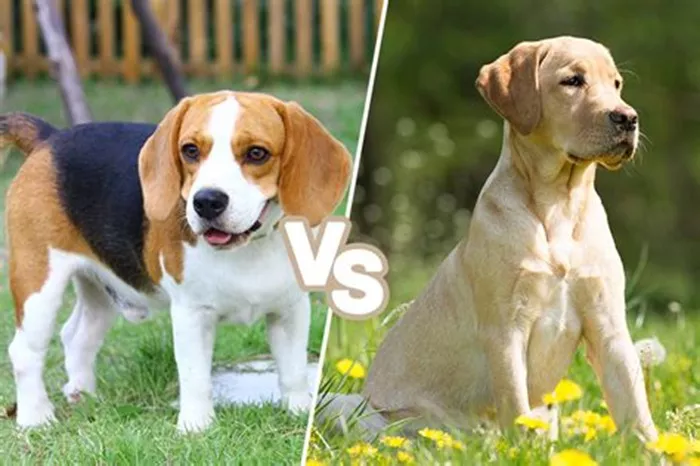Choosing between a Beagle and a Labrador Retriever is a common dilemma for dog lovers. Both breeds rank among the most popular globally, celebrated for their friendly dispositions and loyalty. However, their distinct temperaments, exercise needs, and care requirements make them better suited for different lifestyles. This guide explores key differences to help you decide which breed aligns best with your family’s needs.
Historical Background and Breed Purpose
Beagle
Originating in 16th-century England, Beagles were bred for hunting small game like rabbits. Their exceptional sense of smell and stamina made them ideal pack hunters. Today, they retain their scent-driven instincts but have transitioned into beloved family pets.
Labrador Retriever
Developed in Newfoundland, Canada, Labs were originally working dogs retrieve fish and nets. Their intelligence, strength, and water-resistant coats made them indispensable for this role. Today, they excel as service dogs, therapy animals, and family companions.
Key Takeaway
While both breeds have hunting roots, Labs are more versatile in working roles, while Beagles remain deeply connected to their scent-hunting heritage.
Physical Characteristics and Size
Beagle
Labrador Retriever
Key Takeaway
Temperament and Social Needs
Beagle
Energy Level: High. Requires 60–90 minutes of daily exercise to prevent boredom.
Social Behavior: Friendly, curious, and pack-oriented. Thrives in households with children or other pets but may develop separation anxiety if left alone too long.
Vocalization: Known for howling and baying, especially when excited or bored.
Labrador Retriever
Energy Level: Very high. Needs 60–120 minutes of exercise, including activities like swimming or fetch.
Social Behavior: Gentle, patient, and eager to please. Exceptionally good with children and strangers, making them excellent family dogs.
Vocalization: Moderate barking, typically only when excited or alarmed.
Key Takeaway
Training and Intelligence
Beagle
Labrador Retriever
Key Takeaway
Labs are easier to train for structured tasks, while Beagles thrive in activities that tap into their natural instincts.
Health and Lifespan
Common Health Issues
Beagle: Ear infections (due to floppy ears), obesity, and hip dysplasia.
Labrador: Hip and elbow dysplasia, obesity, and exercise-induced collapse.
Lifespan
Key Takeaway
Both breeds require proactive care, but Beagles may live slightly longer with proper nutrition and exercise.
Grooming and Care
Beagle
Labrador Retriever
Key Takeaway
Labs require more intensive grooming due to their thicker coats, while Beagles need vigilant ear maintenance.
Cost of Ownership
Puppy Prices
Ongoing Costs
Key Takeaway
Labs are generally more expensive to feed and maintain long-term.
Which Breed Is Right for You?
Ideal for Beagle Owners
Ideal for Labrador Owners
Conclusion
Both Beagles and Labrador Retrievers offer unique joys and challenges. Beagles bring playful curiosity and a compact size, while Labs provide intelligence and versatility. The “better” choice depends on your lifestyle, space, and ability to meet their exercise and social needs. Regardless of your decision, both breeds thrive on love, attention, and responsible ownership.
Related Topics:
DO BEAGLES NEED A LOT OF GROOMING?
HOW DO I STOP MY BEAGLE FROM POOPING IN THE HOUSE?


